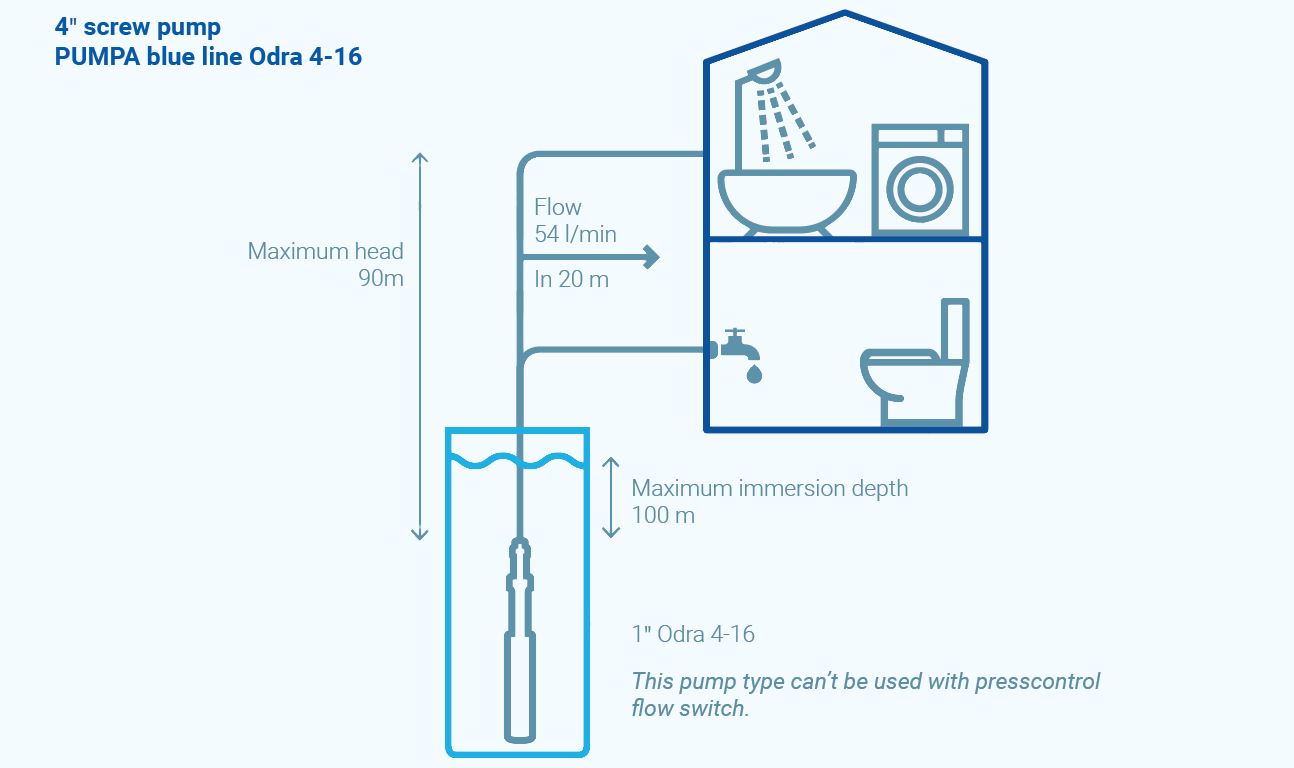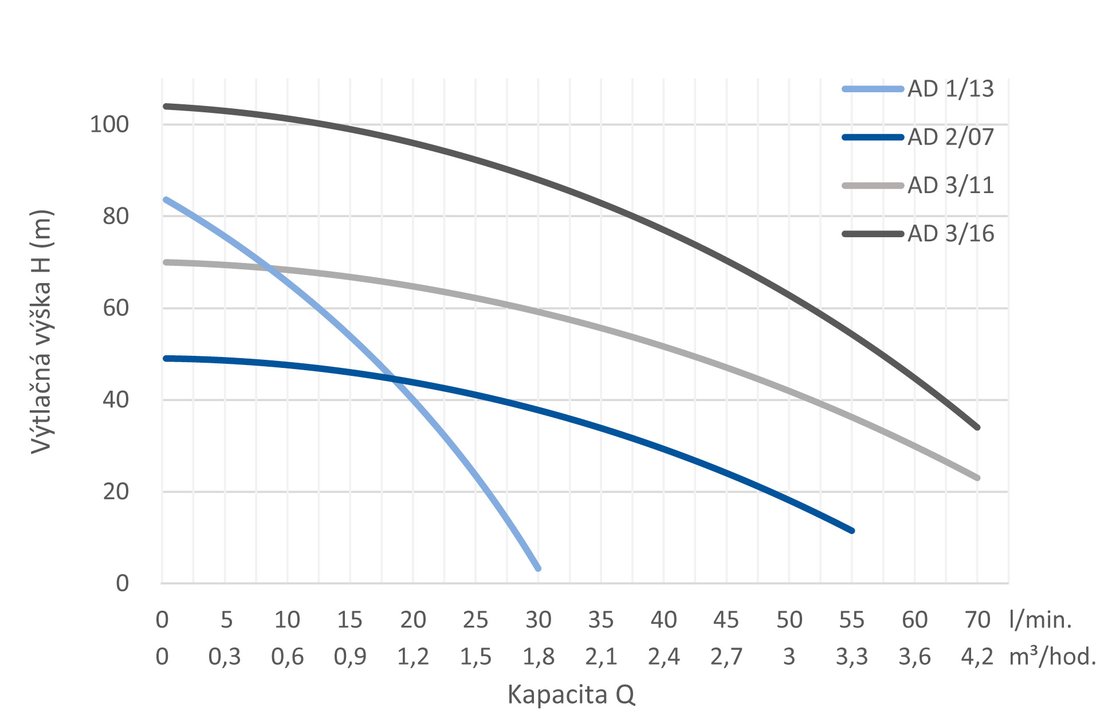How to read parameters
Most often, only the data determining the maximum flow and discharge values are given. These are a guideline, however, it is true that we should choose the pump so that the flow required by us is around the optimal operating point of the pump, which is determined by the combination of flow and discharge. How to understand individual parameters:
Optimum flow rate
The pump flow rate indicates how much the pump can pump fluids over a given period of time, most often you will encounter m3/hour or l/min. Manufacturers indicate the maximum flow rate, that is, the value that can be achieved at zero head. In normal operation, due to head and pressure losses, the pump flow rate will be lower. The higher the head, the lower the flow rate and vice versa. For garden irrigation, you can do with flows up to 2 m3 / hour, for the supply of drinking water to the household using a home waterworks or with the simultaneous use of water in the house and garden, the output should be over 3 m³ / hour with sufficient pressure. In case you are looking for a solution for an irrigation system with several outlets, high pump performance is a must to ensure sufficient pressure and water supply at all outlets at the same time.
Conveying height
After determining the flow, it is necessary to take into account from what depth and distance you will pump the water and not forget about the length of the supply pipe. This parameter represents the conveying height or pump head . Add up all the heights from the water source to the outlet and add a loss of 1 m in height for every 10 m of pipe length. If you want to supply water to a family house, it is necessary to add the required pressure – 1 bar = 10 meters of altitude. As a rule, one model type of pump offers several variants, which often differ in the required head.
Fig. Example of hydraulic curve of pumps Pump AD. Dealer is looking for a pump with such a curve on which your desired power is located at a given head.
Maximum immersion depth
Cheaper pumps are often limited by a depth of immersion of max. 20 m. With some pumps you will not even find this value. The deeper the drilled well, the more important this parameter is. A deep well pump with a maximum immersion depth of 20 meters will not prove you much use with a borehole with a depth of 30 meters.
Power and input
You will certainly be interested in the energy consumption for your chosen pump. A high-quality deep-sea pump with a flow rate of over 3 m3/h and an output of 0.37 kW can be purchased at the same or lower prices as a pump with an output of more than 1 kW.
Port-to-port length
Borehole diameter and proportion of impurities
The width of your well is a given, so adjust the size of the pump. The most common are 3" and 4" pumps for boreholes with a diameter of 100 mm or more. Similarly, models are available for wells with a higher content of sand in the water, etc. When choosing the size of the pump, it is also necessary to ensure sufficient space in the borehole in the so-called ring and prevent clogging of the borehole with rhinestone or other dirt.


